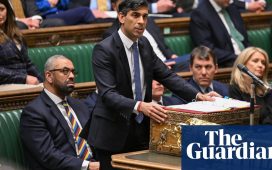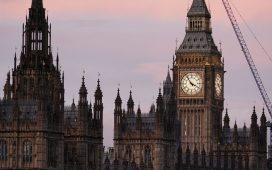HOUSEHOLDS are being ripped off on their electricity bills because firms are paying their shareholders too much.
The National Audit Office study discovered that electricity suppliers have set the target for their shareholder returns at 9 per cent – four per cent higher than the average UK company.
That has increased consumer costs by £100 million a year, the report found.
Customers have also overpaid for their electricity for the last seven years because Ofgem set the bar too low for networks.
The NAO said that although customer service has been good, Ofgem made targets too easy for network companies and overestimated the returns needed to bring investment to the sector.
This has pushed up electricity bills by around £800million for British households over the past seven years – an average of £28 each over the period.
The report also found that households are paying over the odds because electricity suppliers’ cost budgets are set too high and performance targets are set too low, meaning households pay around £130 a year just towards the running and maintenance of networks.
Current rules, known as RIIO-1, give networks an allowance to run and invest in their systems.
If they spend less they can keep half of the savings and return half to customers.
During the full eight years of RIIO-1, due to end in 2021, the distribution networks expect to underspend by 3% on average.
One company, National Grid Energy Transmission, forecasts a huge 22% underspend. Only one business will overspend its allowance.
The RIIO-1 price controls were introduced in 2013, just after the peak of the European sovereign debt crisis.
PRICE CONTROLS
In a bid to reassure jittery investors and bring money into the sector, Ofgem made the rules generous to those putting their cash into energy infrastructure.
As a result, the NAO said, energy network investors have seen returns of 9%, compared with between 5% and 6% at other UK companies.
Shareholders were allowed to claim around 1.5% of this as a reward for smashing through targets to bring down power cuts.
However, the NAO said that Ofgem had set the targets so far in advance that the networks had reached many of them before the regulation period even started.
This piled an added £800 million on to customers’ energy bills, the NAO said.
Ofgem has already indicated it will clamp down on generous investor returns as it plans for RIIO-2, the next round of price controls.
It is likely to cap investor returns at 4.3% for the period during which it expects non-network investors to make 6.5% in real terms. It would be an almost 50% reduction.
“Our tough new round of price controls will lower returns to save consumers money, whilst pushing companies to go further on decarbonisation and ensuring we retain one of the world’s most reliable energy systems,” said Akshay Kaul, Ofgem’s director of network price controls.
The new controls will run for five years. The NAO said the extra time of RIIO-1 had locked customers into paying higher bills for longer.
NATURAL MONOPOLIES
“Ofgem’s regulation of electricity networks has delivered good service performance but higher than necessary costs for consumers. Its approach to price controls used insufficiently demanding targets and the eight-year price control period meant a longer wait before these targets could be reset,” said Gareth Davies, the head of the NAO.
Around a third of the average annual energy bill pays for the electricity and gas households use, some of it goes on the costs of policies, and around a quarter, or just over £250 a year, pays for the gas and electricity networks.
Networks have been heavily regulated since they were privatised in the late 1980s.
The supply business has benefited from a huge proliferation in competition, but Ofgem has been unable to encourage the same explosion in networks because they are natural monopolies.
After privatisation the networks were allowed to increase customers’ bills in line with retail price index inflation, after a deduction to make the companies leaner and provide better value for money.
However the move towards green energy needed a new system to encourage investment to bring offshore wind farms and small solar plants on to the grid.
The new demands resulted in the RIIO-1 system in 2013.
However, in a report last year, Ofgem said that six of nine network companies were making real returns above 10%, which has sparked huge debate in the sector.
Dame Gillian Guy, the head of consumer group Citizens Advice, which has been a loud voice for changes to network returns, said the report is proof that “energy networks have enjoyed a major windfall at the expense of consumers”.
“Ofgem has made good progress towards a tougher settlement next time around.
“The regulator must hold its nerve, resist the efforts of networks to water down its proposals and deliver a price control that works for consumers.”





















